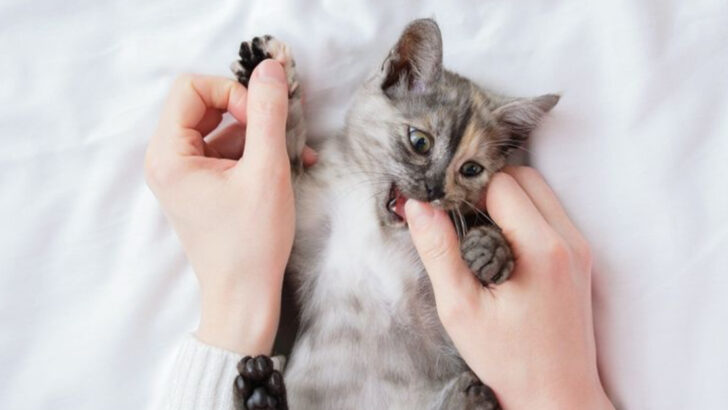Your cat is not attacking you for fun—there’s a message behind those teeth!
One moment, you’re giving gentle chin scratches, and the next—chomp! That sharp little nibble might leave you wondering what you did wrong. But before you assume your cat is just being mean, consider this: biting is one of their ways of communicating.
Maybe they’re overstimulated. Maybe they’re playing. Maybe they’re politely telling you to back off before they really mean it. Whatever the case, those tiny fangs are trying to say something, and it’s up to you to crack the code.
From love bites to full-on chomps, understanding why cats bite can transform your relationship with your feline friend. Let’s dive into what’s behind those sharp surprises—because the better you understand your cat’s language, the fewer battle wounds you’ll have!
Playful Energy
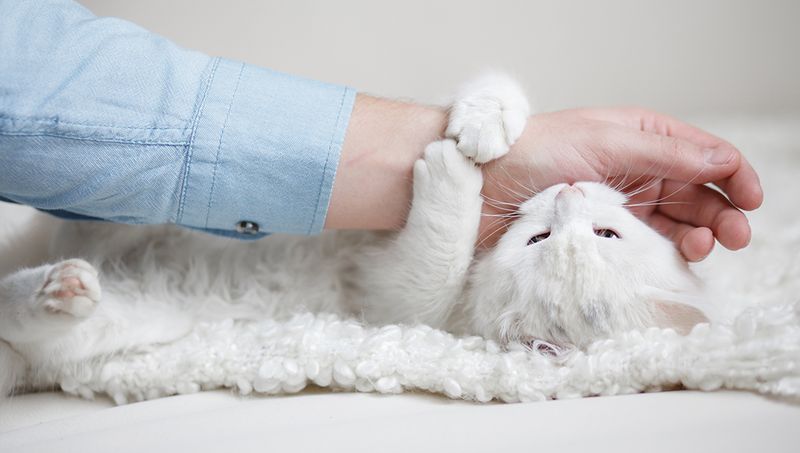
Cats often bite when they’re feeling playful and energetic, turning your home into their personal playground. With a swish of their tail and a gleam in their eye, they engage in what seems like a mock hunting session. This behavior is a natural part of their predatory instincts and is most common in younger cats.
During these playful bouts, your cat might nibble on your fingers or toes, mistaking them for toys. Providing interactive toys can help divert their playful energy away from you. Remember, in their world, a little nibble is just part of the fun!
Overstimulation
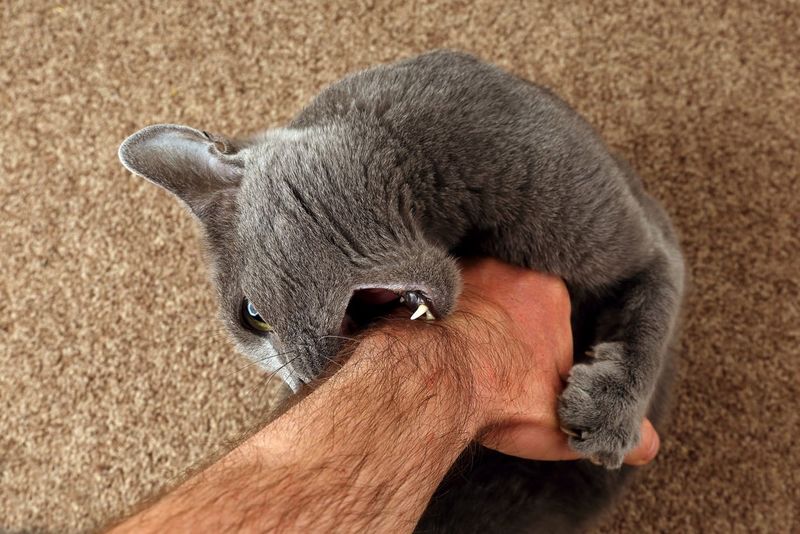
Ever been petting your cat, and suddenly, they give you a nip? It’s their way of saying, “Enough, please!” Cats have a limit to how much affection they can handle before it becomes overstimulation.
This sensation can be likened to the feeling of an itch you can’t scratch. It’s best to watch for signs like tail flicking or skin twitching that often precede a bite. Giving them space and respecting their boundaries will keep your relationship purr-fectly harmonious.
Fear or Anxiety
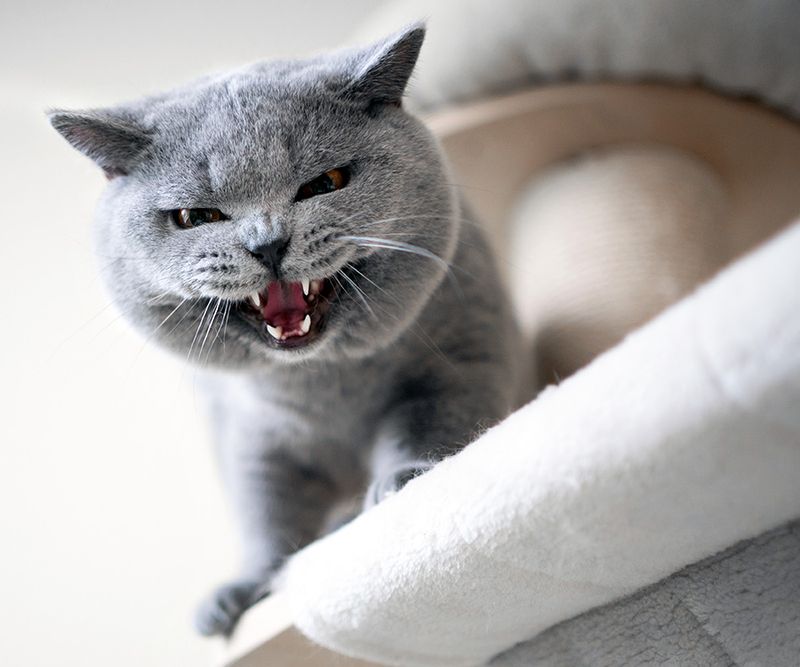
In situations where cats feel threatened, biting becomes a defensive mechanism. A sudden change in environment or the presence of a new pet can trigger fear.
With wide eyes and ears flattened against their head, a fearful cat is telling you to keep your distance. Comfort and patience are key to helping them feel secure. Gradually introducing changes and providing safe spaces can alleviate their anxiety, reducing the likelihood of bites.
Communication and Attention-Seeking
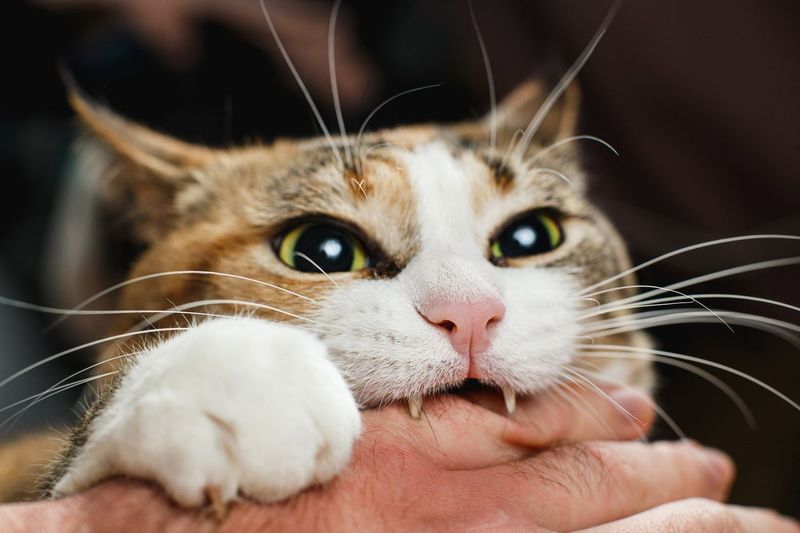
Sometimes, a bite is just a demand for attention. Cats are clever communicators and might nip to say, “Hey, notice me!”
This behavior is often accompanied by meowing or pawing at you. Ensuring they have enough mental and physical stimulation can prevent these attention-seeking nips. Create a daily play schedule to keep them engaged and content, turning those bites into purrs of satisfaction.
Pain or Discomfort
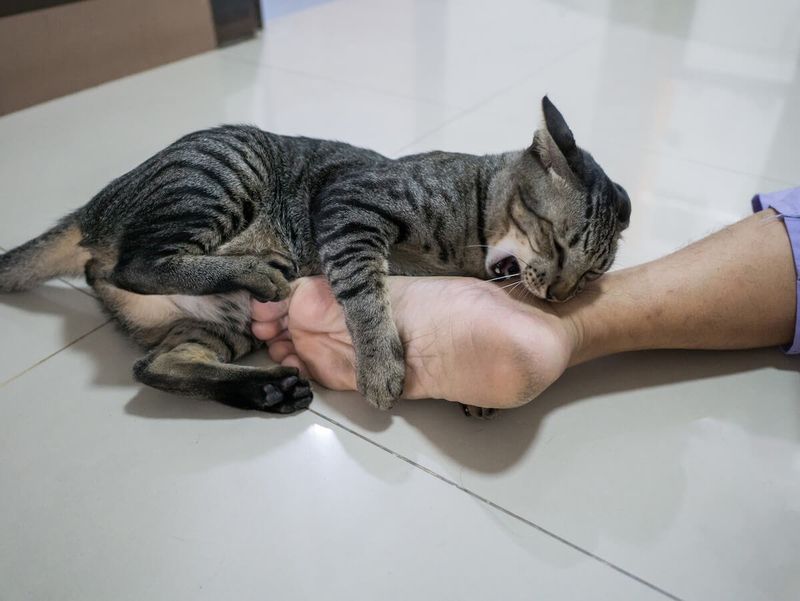
When in pain, cats might bite as a way to express their discomfort. It’s their only way to communicate something’s wrong.
A gentle touch might trigger an unexpected bite if your cat is hurting. Regular vet checks and observing changes in behavior can help catch underlying health issues early. If your usually docile cat becomes suddenly aggressive, it could be their way of asking for help.
Territorial Behavior
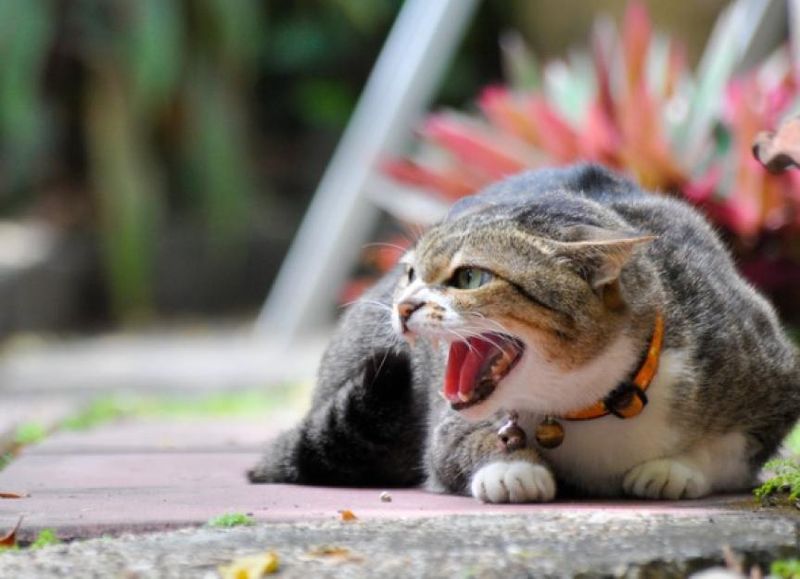
In the wild, boundaries are key, and your home is no different. Cats might bite to assert dominance or mark territory, especially if they feel their space is invaded.
A fierce expression and quick, defensive nips are signs they’re protecting their domain. Ensuring each cat in a multi-pet household has its own space can ease these tensions. Respecting their territory is crucial for a peaceful coexistence.
Lack of Socialization
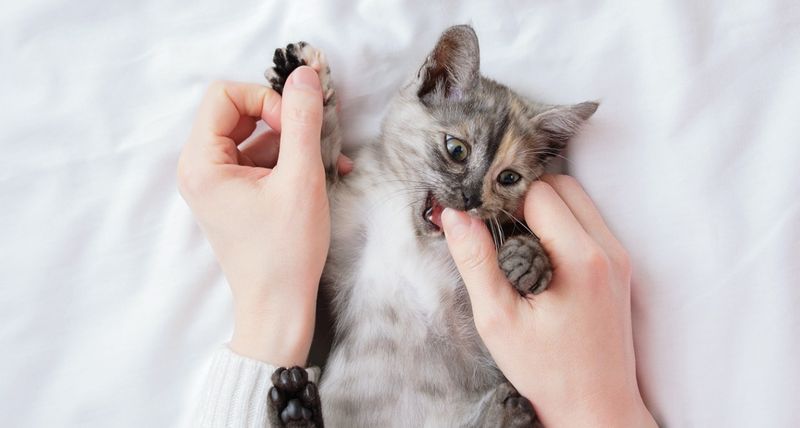
Cats that haven’t been properly socialized might bite out of uncertainty. A kitten not exposed to human interaction early might find it hard to trust.
Timid and hesitant, these cats require gentle handling and patience. Gradually increasing their exposure to new people and environments can build confidence. Using positive reinforcement during interactions helps create a bond of trust and reduces fear-induced biting.

